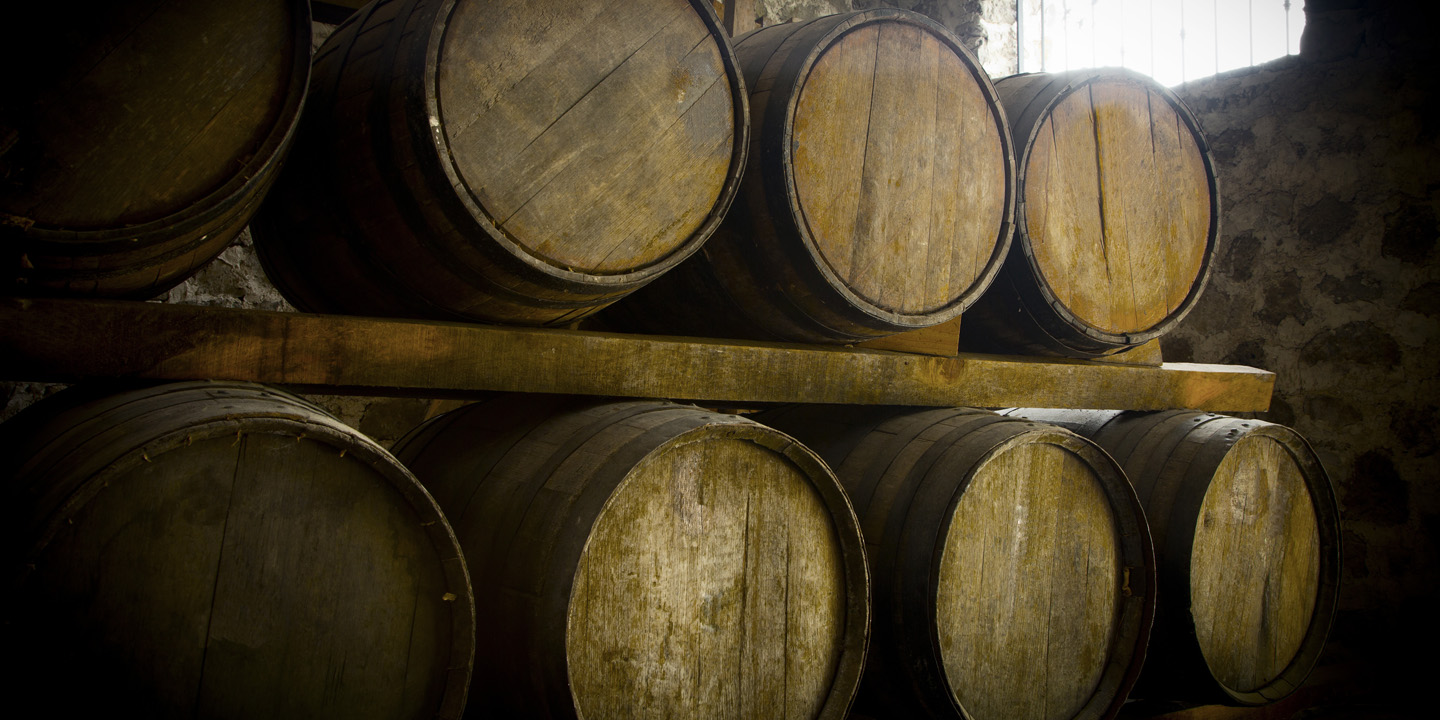Are Bourbon or Sherry Casks Better?
Learn Whisky, Whisky History
Just like many recorded discoveries throughout history, the benefits of aging whisky were stumbled upon quite by chance. In Scotland, centuries ago, casks were simply used as vessels to deliver the freshly distilled spirit which was usually consumed before the oak could impart any flavours.
Thankfully, some casks were disregarded here and there, and the whisky was left to age peacefully and infuse with its oak surroundings. Some lucky Scotsmen eventually discovered this magnificent, aged spirit and the word quickly spread across the land… Age improved a whisky’s flavour.
Since then aging whisky in casks became the norm, and even today Scottish law dictates that whisky must mature in oak casks not exceeding 700 litres, for a minimum of 3 years.
Oak is both flexible and solid and allows the whisky to continuously soak in and out of the wood during its maturation. While in the early days of whisky production new oak casks were sometimes used, it quickly became common knowledge among producers that fresh wood imparted flavours too sharp and harsh to a maturing whisky, overpowering the delicate flavours being created.
The only casks used as maturation vessels, therefore, became older ones that had usually been used to store another kind of liquid. This process absorbed much of the harshness of the wood, allowing whisky to mature slowly and smoothly within the cask.
With the passing of the years, after trial and error, changes in availability, and increasing costs, bourbon and sherry casks became the most common casks used for whisky maturation. This remains true to this very day with the aforementioned cask types being the most commonly used in Scotch whisky production.
A Brief History of Casks
After realizing that older casks were needed for whisky maturation, producers began to use the most readily available casks which had previously held a different liquid. At the time this happened to be sherry casks, due to the fact that the Spanish would ship the wine up to England still in its cask, as this was the cheapest option.
Much to the delight of whisky producers, sherry casks were easy to find and sold at greatly discounted prices as sherry producers didn’t want to pay to have them shipped back to Spain. However, in the 1970’s sherry producers began bottling their wine before shipping and so, the casks disappeared from the market.
At this point, amidst a serious shortage, whisky producers turned to bourbon casks in the United States. U.S. law states that bourbon must be produced in only new barrels. Bourbon casks were disregarded and deemed useless after only one use. These casks started being bought up and shipped to Scotland at very low prices and bourbon cask-aged whisky became the new “thing” in the whisky world.
While bourbon-aged whisky became popular, whisky lovers continued to long for the lost flavours sherry casks imparted to the whisky decades later. In the 1990’s this longing for lost flavours spurred some world-renowned producers into, once again, using sherry casks for maturation.
Sherry casks were, at this time, much more expensive than bourbon barrels and shipping them from Spain to Scotland presented extra costs. Some passionate producers decided the superior flavour and quality was worth the extra expenses, while others continued to use the cheaper bourbon barrels.
The ones who continued the use of bourbon casks also helped coin the term “sherry finish.” Bourbon-barrel aged whiskies would be transferred to sherry casks for up to two years in order to receive some of the famous sherry flavours.
Some producers went even further by constructing their own casks, leasing them to sherry producers and then reclaiming them for whisky maturation after they had been used for the storage of sherry.
It can safely be assumed that for producers to go through the troubles and expenses of procuring sherry casks, the improvements sherry imparts to whisky during maturation must indeed be substantial.
This seems to be an agreed upon fact throughout the whisky world, with brands like Dalmore and Macallan swearing by the magic of a sherry-aged whisky.
Verdict
The debate concerning bourbon and sherry casks is an everlasting one in the whisky world, full or disagreements and backlash. The great whisky writer Michael Jackson suggested that sherry casks add a nutty smoothness to the whisky while bourbon casks impart caramel and vanilla. Smooth, rich, infused with dried fruits and spice all commonly describe sherry-cask aged whiskies. Sweet and creamy tend to describe bourbon aged ones.
Another unanswered question is whether the whisky receives its flavour changes from the sherry left within the cask or from the special Spanish oak that the cask is made of. This becomes increasingly difficult to determine, as there are many different kinds of sherry including Olorosso, Fino and Amontillado.
Taking the above information into account one can deduce that the question of bourbon casks vs. sherry casks in a hard one to answer. While the whisky world seems to lean towards sherry, many love the taste of bourbon-aged whisky. One thing that can be said for certain is that sherry casks tend to be more diverse, complex and the many different types of sherry wine impart myriad unique flavours to whisky.
Looking into the techniques used by the producers of your favourite whiskies and branching out to some whiskies aged in different types of casks are some good steps in determining your opinion in the “which cask type is better” debate.
Our own 18 year-old Edrabour was aged in an Olorosso Sherry cask, while our 18 year-old Wilson & Morgan Glenrothes features a sherry finish. Compare one of the above to our Gordon & Macphail Caol Ila aged for 10 years in an American Bourbon cask.



